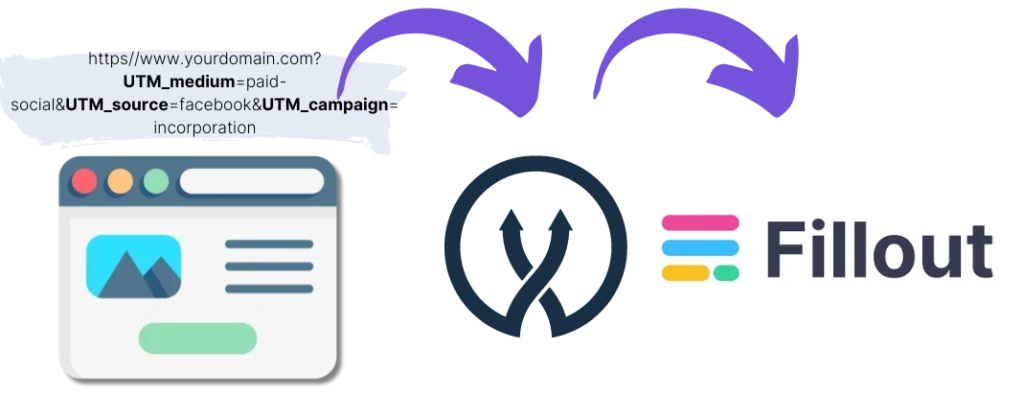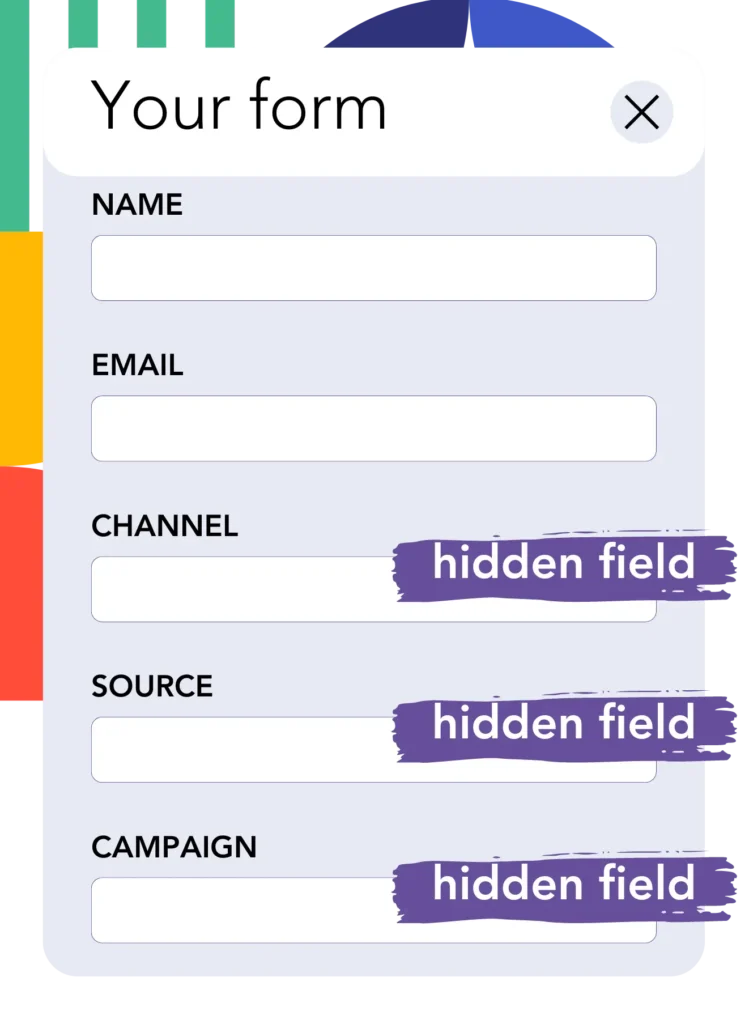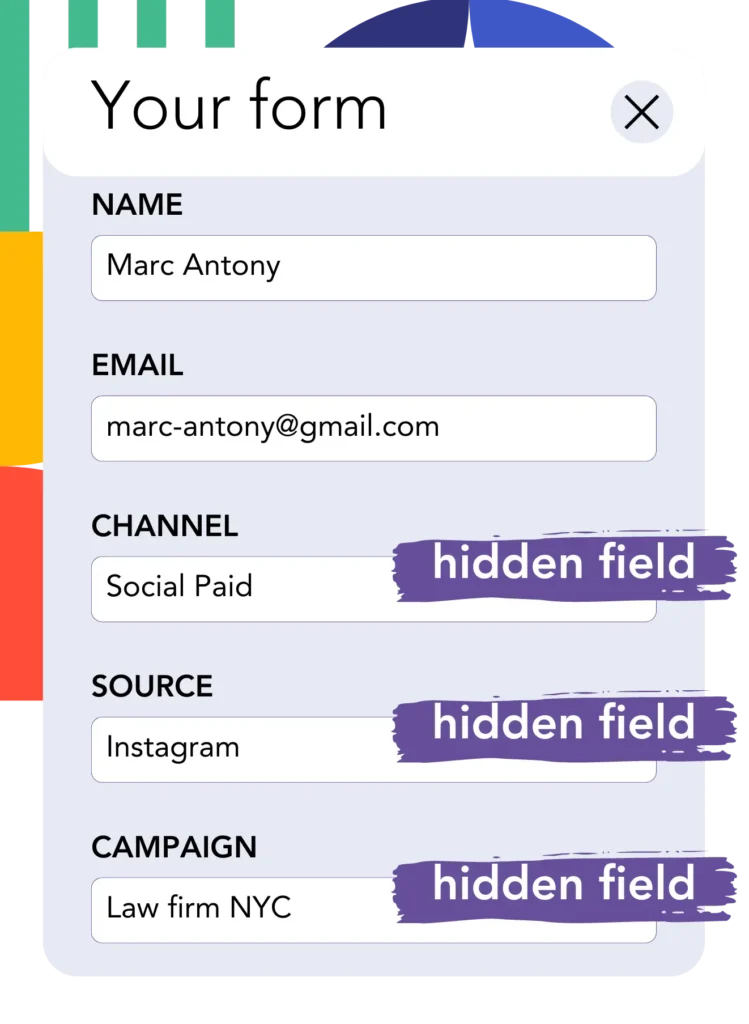If you find it difficult to add UTM tracking to Fillout, you’re not alone, especially if you don’t have coding skills.
But what if there was an easy way to capture UTM parameters in Fillout without needing to code?
Introducing Leadsources.io!
Leadsources is a tool designed to bridge the gap between your UTM parameters and Fillout.

When someone clicks on your marketing campaign, Leadsources grabs the UTM parameters from your URL.
Leadsources then automatically places these UTM parameters into hidden fields within your Fillout form.
You can view the UTM parameters alongside the lead’s information on the submission page in Fillout.
Follow this easy guide to learn how to implement UTM tracking in Fillout with Leadsources in just 10 minutes, coding skills not needed.
Track UTM Parameters in Fillout with These 4 Simple Steps
Step 1: Add Leadsources to Your Website’s Head Tag

Sign up to Leadsources.io and start with our 14-day free trial.
Place the Leadsources code into the head tag of your website. You won’t need any coding skills or developers for this.
Just follow our easy, step-by-step instructions.
Step 2: Add UTM Parameters to Your Campaigns

Include the UTM parameters you want to track in all of your campaigns (such as PPC, email, social media, etc.).
Leadsources supports the following UTM parameters:
- UTM_source
- UTM_campaign
- UTM_term
- UTM_content
Additionally, Leadsources captures details beyond UTM parameters, including channel, landing page, and landing page subfolder.
Step 3: Set Up Hidden Fields in Your Fillout Form

When visitors fill out your Fillout form, they provide personal details in the visible fields (like name and email).
Meanwhile, Leadsources.io automatically adds UTM parameters to the hidden fields in your Fillout form.
To do this, add hidden fields to your Fillout form to store UTM parameters. Check the guide we have created.
Add Hidden Fields
- Within the “Logic” section, look for an option that says “Personalize with Data” or “Hidden Fields”.
- Click on “Personalize with Data” and then select “Hidden Fields” from the dropdown menu or options presented.
- Add the exact following fields one by one:
- channel
- source
- campaign
- term
- content
- landingpage
- landingpagesubfolder
Step 4: Track UTM Parameters in Fillout

When a visitor clicks on your campaign and arrives at your website, Leadsources captures the UTM parameters from the URL.
As the visitor completes the Fillout form, Leadsources places the UTM parameters into the hidden fields of the form. These fields remain invisible to the user.
When the form is submitted, you can view the UTM parameters along with the form responses on the Fillout submission page.
How does Leadsources work?
By inserting the Leadsources code into your website’s head tag, Leadsources reads and captures UTM parameters from your URL whenever someone visits your site.
It then saves these UTM parameters in the hidden fields of your Fillout form.
If a visitor arrives at your site without UTM parameters, Leadsources can still capture other visitor data such as:
- Channel
- Source
- Campaign
- Landing page
- Landing page subfolder
Leadsources enables you to track lead sources even without UTM parameters, such as:
- On Google Search
- On your Instagram bio link
- On your social media posts
While most tools track lead sources only through UTM parameters, Leadsources helps you track leads from various sources whether UTM parameters are used or not:
- Organic Search
- Paid Search
- Organic Social
- Paid Social
- Referral
- Affiliate
- Display Advertising
- Direct Traffic
This feature allows you to collect lead source data in a centralized place.
Pro tip:
LeadSources integrates with all the popular online form builders, including Cognito Forms, Gravity Forms, Jotform, Typeform, WPForms, and more. Check how to track the UTM parameters in any form builder.
How to Generate Performance Reports
Once you have UTM data in the hidden fields of your Fillout forms, you can create performance reports like:
- Leads per channel
- Revenue per channel
- Revenue per keyword
These reports help you make informed decisions about your marketing strategies.
Let’s review the types of reports you can generate to help you make informed decisions.
Lead performance reports
You can generate reports to show lead volumes based on:
- Channel
- Source
- Campaign
- Landing page
- Landing page subfolder
Example #1
You run campaigns on different channels (SEO, PPC, emailing, etc.). Retrieve the data and generate the report: “Leads by Channel”.

Example #2
Once you identify the top-performing channel (e.g., Google Ads), you can break it down to see leads from each ad campaign.

Example #3
After determining the best campaign, you can further analyze which keywords are generating the most leads for that campaign.

Sales performance report
Understanding which ads and keywords drive the most leads is just the start.
To see if these leads are boosting your revenue, send your Fillout submissions to a CRM to generate sales-focused reports.
Example:
| Channels | Search Paid | Social Paid |
| Leads | 50 | 75 |
| Sales | 5 | 6 |
| Average order value | $150 | $100 |
| Revenue | $750 | $600 |
After running ads on Google and Facebook, you might find that Social Paid ads generate more leads, but Search Paid ads lead to higher revenue. This insight helps you decide to allocate more budget to Search Paid ads.
LeadSources tracks the source of each lead in Fillout, whether they come from ads, organic search, social, email, etc. and syncs that data with each submission. See the full breakdown on the lead source in Fillout page.
